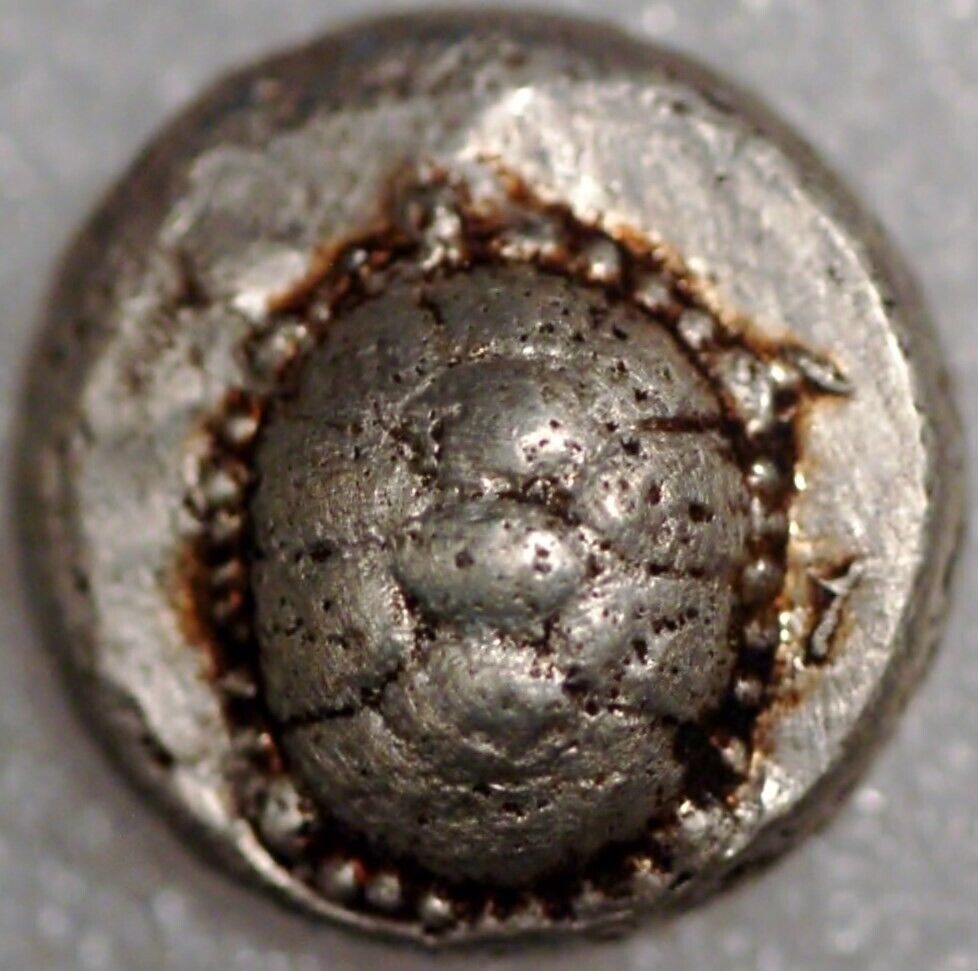Description
Ancient Greece Silver Stater of Aigna Circa 530 BC sea turtle (5981Q)
Weight: 11.74 grams
Diameter: 19.1 mm
Thickness: 6.4 mm
In addition to the silver they received in trade, Aegina worked the mines of the silver-rich island of Siphnos, which were at the height of their production as Aegina was flourishing.
The emissions from Aegina were substantial, resulting in their weight standard becoming dominant throughout much of Greece in the sixth and fifth centuries. The Athenians called the Aeginetan drachm the “thick drachm” as it was heavier than that of Athens, with their common didrachm “stater” coinage weighing about 12.6 grams.
Their status as the first international trade currency was aided by the consistency of their designs, and their coins spread far throughout the known world. The earliest ancient coins types, like this coin, depict a sea turtle engraved in high relief with an incuse pattern on the reverse. The reverse punch changed over time, starting with eight triangles and progressing to a “mill sail”, then a “skew” pattern, to increase the usable duration of the die.
The choice of a turtle is likely due to their influence as a sea power but perhaps also because the pre-coinage ingots in use in the region were convex in shape and may have been colloquially known as “turtles”.




